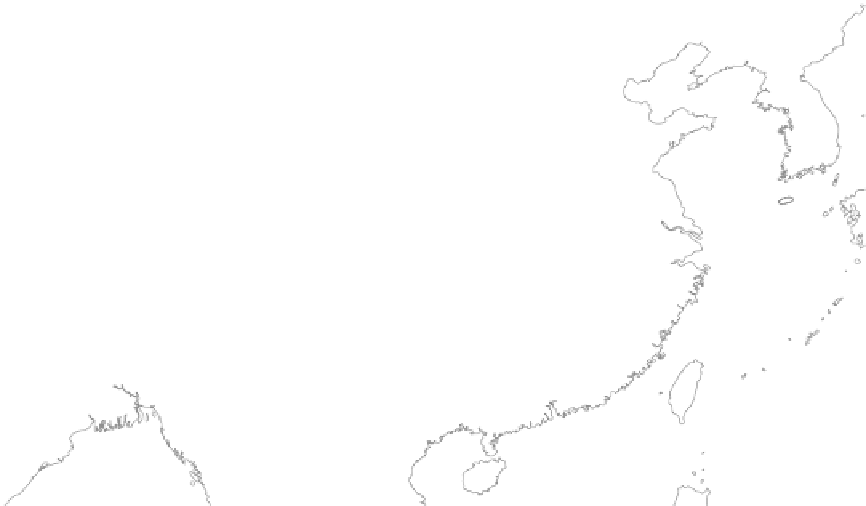Geography Reference
In-Depth Information
PASTURE LAND
OASIS FARMING
limited by irrigation
cotton, fruit, vegetables
CORN, KAOLIANG &
WINTER WHEAT
rotation of corn &
soybeans
cotton
MILLET , CORN &
WINTER WHEAT
kaoliang, oats &
buckwheat
Y ellow
Sea
BARLEY & WHEAT
tubers & hardy vegetables
Gr
edomi
RICE
followed by wheat, rape, peas
corn and sweet potatoes
East
China
Sea
RICE & TEA
wheat, rape, peas
RICE
wheat, beans, rapeseed
corn & subtropical crops
Pacific
Ocean
DOUBLE CROP RICE
2 crops annually;
wheat, veg, sugarcane
0
300
600 mi
Bay
of Bengal
South
China Sea
300
0
600 km
Figure 11-8
This agricultural map of China shows the division between north and south in terms of crops grown
and the ability to double-crop. The north grows more wheat while the south grows more rice. The
division coincides with the 20-inch isohyet, which follows the Qinling Shan and the Huai He.
China has had a long-standing relationship
with the pig' s ancestor, the wild boar. Farmers hated
the boar for destroying their vegetable crops but ad-
mired it for its strength, speed, and the perceived
therapeutic value of its body parts. Once the boar
was domesticated as the pig, it provided meat, bris-
tles, fertilizer, and countless other by-products. It
required no large space and ate anything. Its fast
growth and reproductive ability made it a symbol
of wealth and prosperity . Even today , you can pur-
chase gilded, golden pigs to bring prosperity to
your home or office.
Before 200 BC, social stratification defined
what one could eat. Pork could be eaten by the em-
peror and lower ministers. Others, such as feudal
lords, state ministers, generals, and commoners,
were required to eat other meats. Pigs also played a
role in life and death rituals, and pig effigies and
bones were often included in burials. Pigs were also
thought to be efficient guardians of children.
Pigs are raised on large, state-run feedlots as
well as on privately owned farms. Collectively , there
are about 4,000 of these enterprises. As incomes
rise with spiraling economic development, the de-
mand for pork has increased dramatically .
Pork production can be a risky business. For
example, bad weather in 2007 was responsible for
the death of 3.7 million pigs. The 2008 earthquake
in Sichuan killed another 4 million. Since then,
government price supports have brought the indus-
try back to its normal levels.



































































































Search WWH ::

Custom Search